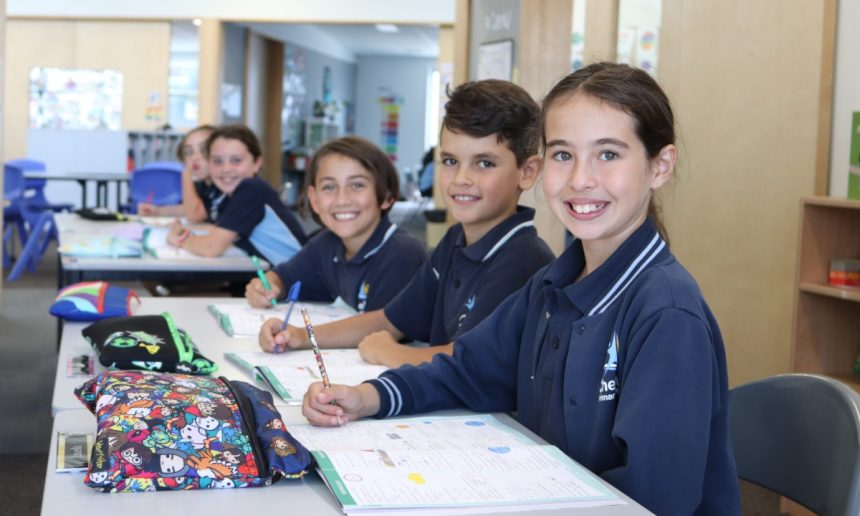Australian schools that have invested time and funds into transitioning to explicit teaching credit the approach with improving learning outcomes and NAPLAN results.
‘Explicit teaching’ involves directing students to focus repeatedly on the core principles of new material, through a structured education approach centred around breaking topics and content down into smaller, more easily digestible pieces of information.
But behind the simplicity of this style of teaching is a more complex set of logistics to support its implementation – and this shift is driving real cultural change in the staff room.
The shift in the staff room – one school’s experience
In Melbourne’s south, Chelsea Primary School adopted the explicit teaching approach after principal Taylor Irish brought it with him from a previous school, and the results spoke for themselves. Teacher Christine Hulse told The Bursar that the method lightens the workload for teachers long-term, “because we all plan together as a team”.
Ms Hulse says teachers allocate two hours each week to plan as a team. Their system works on a timetable rotation, with a different teacher scheduled to plan for literacy each week meaning management of each task is repeated a few times each term.
“We work around each other’s commitments and then we discuss it during our planning time. One person prepares a PowerPoint presentation of the plan, including vocabulary, examples, story, discussion questions, comprehension questions, and the selection of differentiated activities,” she says.
“This is what every lesson looks like, and it means teachers are sitting together in the staff room and planning the next week’s literacy and numeracy together. Even though one teacher might be taking full responsibility, everybody has an input.”
Teachers can now collaborate to share insights and strategies that have proven successful, and this has meant a cultural shift for the school, as well as a logistical one, which has been welcomed by Ms Hulse and her colleagues.
“That’s always been the goal, and in particular Taylor’s goal – and it’s always been a bugbear for me in schools where this wasn’t happening: No teacher should be an island, and that has to come from the top.”
How teachers could benefit from Explicit Teaching
Educators have shared mixed reviews about the effect of explicit teaching on those delivering it.
La Trobe University professor of cognitive psychology Pamela Snow told The Bursar, “there’s a number of myths and misconceptions – that this is all teacher-centred, and boring”.
“It certainly asks a lot more of the teacher, but is fast paced, highly interactive and inclusive,” she says.
She also adds that explicit teaching maps out what is to be taught, when and how, allowing teachers to draw on “high-quality lesson plans and collaborate with peers on how and where topics are covered in the curriculum”.
It’s her experience that “explicit teaching involves shared engagement norms across a school, so students are ‘tuned in’ to how classes run”.
“This reduces off-task time and promotes engagement by all students,” she told The Bursar. “In turn, this reduces the ‘background hum’ of off-task behaviour that is mentally and practically draining for teachers.”
Mr Irish is vocal about his belief that, “explicit teaching can dramatically impact student behaviour in the classroom, as students don’t have time to be naughty or not concentrate”.
A more inclusive approach to education
For educators and policymakers keen to incorporate the explicit teaching approach, two things are clear: implementing it takes time and requires a real investment and buy-in from principals and teachers, and the government needs to be on side.
“You need the support of a principal and leading teachers, and it does require funding, such as professional development (PD) for staff, and time to explain what you’re doing and gradually introduce these changes,” says Ms Hulse.
Professor Snow believes that, if explicit teaching takes off in Australia, it could be “a real turning point for teachers, students, systems and parents”.
“Teachers will be equipped with specialised knowledge about the science of learning, and empowered to apply this in their work,” she told The Bursar. ““This is good for teacher self-efficacy and the professional standing of the discipline. The number of students in what is currently described as ‘the long tail of under-achievement’ will reduce and overall achievement levels in literacy and numeracy will lift. I believe that we would also see an uptick in student well-being, as that is closely aligned to academic achievement.”
Given the tendency for students (particularly disadvantaged students) to be left behind with minimally guided teaching methods, Professor Snow says “explicit teaching could be a way to build equity in an education system”.
On the ground, Ms Hulse believes it’s already happening, “like a little bit of a tsunami”.








